A Comprehensive Guide to Hazelnut and Peanut Varieties Introduction: Hazelnuts and peanuts are two popular types of nuts that are not only delicious but also offer various health benefits. Hazelnuts, with their distinct sweet and buttery flavor, are commonly used in both sweet and savory recipes. On the other hand, peanuts are known for their earthy and rich taste and are widely consumed in various forms, such as roasted, salted, or as peanut butter. In this article, we will explore the different varieties of hazelnuts and peanuts, their characteristics, and some of their uses. I. Hazelnut Varieties: A. Common/Filbert (Corylus avellana) 1. Description: The common or filbert hazelnut is the most widely grown and commercially available variety. It has a slightly sweet and buttery taste and is often used in confectionery and baking. 2. Cultivars: Some notable cultivars include Barcelona, Tonda Gentile Romana, and Butler. 3. Uses: Common hazelnuts are used in making pralines, pastries, spreads like Nutella, and in chocolate manufacturing. B. American Hazelnut (Corylus americana) 1. Description: The American hazelnut is native to North America and has a slightly milder flavor compared to the common hazelnut. It has a sweeter taste and a softer, easier-to-crack shell. 2. Cultivars: Some popular cultivars include Alpha, Theta, and Gamma. 3. Uses: American hazelnuts are often enjoyed roasted, added to salads, or included in trail mix. They are also used in baking, particularly in cookies and cakes. C. Turkish Hazelnut (Corylus colurna) 1. Description: The Turkish hazelnut, also known as the Constantinople hazelnut, has a rich and intense flavor. It is larger than the common hazelnut and has a distinctively elongated shape. 2. Cultivars: Notable cultivars include Kentish Cob and England’s Glory. 3. Uses: Turkish hazelnuts are commonly used in baking, ice cream production, and in the production of hazelnut liqueurs. They can also be enjoyed as a snack on their own. II. Peanut Varieties: A. Runner Peanuts (Arachis hypogaea) 1. Description: Runner peanuts are the most common type of peanut grown in the United States.
nuts
 They have a medium size, a uniform shape, and a dark red skin. They are known for their high yields and good flavor. 2. Cultivars: Popular cultivars include Florigiant, Georgia-06G, and Georgia Green. 3. Uses: Runner peanuts are widely used in making peanut butter due to their high oil content. They are also popularly consumed roasted and salted, as toppings for ice cream, or incorporated into various dishes such as stir-fries or satay sauces. B. Virginia Peanuts (Arachis hypogaea) 1. Description: Virginia peanuts are known for their large size and have a unique shape. They have a light reddish-brown skin and a rich, bold flavor. 2. Cultivars: Popular cultivars include NC-V 11, NC-V 12, and Bailey. 3. Uses: Virginia peanuts are often sold in-shell and consumed as a snack. They are also used in confections, peanut butter, and as a garnish for salads and desserts. C. Spanish Peanuts (Arachis hypogaea) 1. Description: Spanish peanuts are smaller in size compared to other peanut varieties and have a reddish-brown skin. They are typically rounder and have a sweeter flavor. 2. Cultivars: Popular cultivars include Valencia, Tennessee Red, and Florunner. 3. Uses: Spanish peanuts are widely used in the production of roasted peanuts and are a popular choice for garnishing dishes like pad thai. They are also used to make peanut oil and snacks like peanut brittle. D. Valencia Peanuts (Arachis hypogaea) 1. Description: Valencia peanuts are small and sweet with a red skin, making them a popular choice for peanut butter production. They have a crunchy texture and robust taste. 2. Cultivars: Popular cultivars include TamNut OL06, Tamrun OL12, and Tamrun OL13. 3. Uses: Valencia peanuts are commonly used in peanut butter, candy bars, and other confections. Their high oil content also makes them ideal for roasting and salting. Conclusion: Hazelnuts and peanuts come in a variety of types, each with its own unique flavor profile and culinary uses. Whether you prefer the sweet and buttery taste of hazelnuts or the earthy richness of peanuts, these nuts offer plenty of possibilities in the kitchen. From baking and confectionery to spreads and savory dishes, hazelnuts and peanuts are versatile ingredients that can enhance a wide range of recipes. Next time you reach for a handful of nuts or consider using them as an ingredient, remember the various varieties within hazelnuts and peanuts and explore the endless culinary possibilities they offer.A. Hazelnut Market Trends and Opportunities: The market for hazelnuts has been expanding rapidly in recent years, driven by factors such as increased consumer awareness of their health benefits and growing demand for natural and plant-based ingredients. Hazelnuts are rich in nutrients and are a good source of healthy fats, protein, and dietary fiber. They also contain various vitamins and minerals, making them a popular choice among health-conscious consumers.
They have a medium size, a uniform shape, and a dark red skin. They are known for their high yields and good flavor. 2. Cultivars: Popular cultivars include Florigiant, Georgia-06G, and Georgia Green. 3. Uses: Runner peanuts are widely used in making peanut butter due to their high oil content. They are also popularly consumed roasted and salted, as toppings for ice cream, or incorporated into various dishes such as stir-fries or satay sauces. B. Virginia Peanuts (Arachis hypogaea) 1. Description: Virginia peanuts are known for their large size and have a unique shape. They have a light reddish-brown skin and a rich, bold flavor. 2. Cultivars: Popular cultivars include NC-V 11, NC-V 12, and Bailey. 3. Uses: Virginia peanuts are often sold in-shell and consumed as a snack. They are also used in confections, peanut butter, and as a garnish for salads and desserts. C. Spanish Peanuts (Arachis hypogaea) 1. Description: Spanish peanuts are smaller in size compared to other peanut varieties and have a reddish-brown skin. They are typically rounder and have a sweeter flavor. 2. Cultivars: Popular cultivars include Valencia, Tennessee Red, and Florunner. 3. Uses: Spanish peanuts are widely used in the production of roasted peanuts and are a popular choice for garnishing dishes like pad thai. They are also used to make peanut oil and snacks like peanut brittle. D. Valencia Peanuts (Arachis hypogaea) 1. Description: Valencia peanuts are small and sweet with a red skin, making them a popular choice for peanut butter production. They have a crunchy texture and robust taste. 2. Cultivars: Popular cultivars include TamNut OL06, Tamrun OL12, and Tamrun OL13. 3. Uses: Valencia peanuts are commonly used in peanut butter, candy bars, and other confections. Their high oil content also makes them ideal for roasting and salting. Conclusion: Hazelnuts and peanuts come in a variety of types, each with its own unique flavor profile and culinary uses. Whether you prefer the sweet and buttery taste of hazelnuts or the earthy richness of peanuts, these nuts offer plenty of possibilities in the kitchen. From baking and confectionery to spreads and savory dishes, hazelnuts and peanuts are versatile ingredients that can enhance a wide range of recipes. Next time you reach for a handful of nuts or consider using them as an ingredient, remember the various varieties within hazelnuts and peanuts and explore the endless culinary possibilities they offer.A. Hazelnut Market Trends and Opportunities: The market for hazelnuts has been expanding rapidly in recent years, driven by factors such as increased consumer awareness of their health benefits and growing demand for natural and plant-based ingredients. Hazelnuts are rich in nutrients and are a good source of healthy fats, protein, and dietary fiber. They also contain various vitamins and minerals, making them a popular choice among health-conscious consumers.
Specifications of nuts
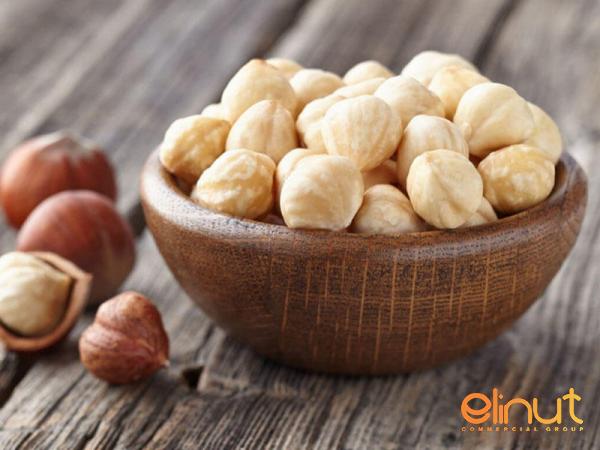 The global hazelnut market is seeing significant growth, with Europe being the largest consumer and producer of hazelnuts. Turkey is the leading producer of hazelnuts, accounting for more than 70% of the world’s supply. This dominance has led to Turkey’s hazelnuts being referred to as “Turkish hazelnuts” in the market. However, other regions such as the United States, Italy, and Spain also cultivate hazelnuts, contributing to the overall supply. The increasing popularity of hazelnuts has created opportunities for businesses in various sectors. Food manufacturers are incorporating hazelnuts into a wide range of products, including baked goods, confectionery, spreads, and nut milks. This trend is driven by consumer demand for healthier and more diverse options. Additionally, the rising interest in plant-based diets has led to the development of hazelnut-based meat substitutes and vegan-friendly products. B. Harnessing the Growing Demand: Hazelnut Farming and Processing: To capitalize on the growing demand for hazelnuts, businesses can consider investing in hazelnut farming or processing operations. Hazelnut cultivation requires specific soil conditions and climates, making it ideal for regions with moderate temperatures and well-drained soil. Turkey, Italy, and the Pacific Northwest region in the United States are some of the main hazelnut-growing areas. Hazelnut farmers need to carefully select and plant suitable hazelnut varieties, ensuring they are adapted to the local climate and disease-resistant. Proper orchard management practices, including regular pruning, pest control measures, and irrigation, are crucial for maximizing yields and maintaining the health of the trees. Once harvested, hazelnuts need to undergo processing to remove their shells and prepare them for commercial use. Processing typically involves sorting, cleaning, and roasting the nuts to enhance their flavor. Some businesses also offer value-added products, such as blanched hazelnuts, chopped hazelnuts, and even hazelnut oil. C. Hazelnut Products and Market Expansion: The market for hazelnut products extends well beyond whole nuts. Hazelnuts are widely used in the confectionery industry, with products like pralines, truffles, and chocolate spreads being popular choices. Hazelnut-based spreads, such as Nutella, have gained a significant following worldwide. These versatile spreads can be used as a topping for toast, pancakes, or even as an ingredient in dessert recipes. In recent years, hazelnut-based milk alternatives have gained traction as a dairy-free and plant-based option. Many companies now offer hazelnut milk, which serves as an alternative to traditional dairy milk in beverages, cereals, and other food applications. As the demand for hazelnuts continues to rise, there is a growing market for hazelnut-based snacks. Many businesses are innovating by introducing roasted and flavored hazelnut snacks, catering to consumers looking for healthier on-the-go options. D. Peanut Industry Overview: The peanut industry is a significant player in the global agricultural sector, with peanuts being one of the most widely consumed nuts worldwide. Peanuts are not only popular as a snack but are also widely used in various culinary applications. The United States is the leading producer of peanuts globally, followed by China and India. The peanut industry encompasses various segments, including farming, processing, and manufacturing. Peanut farming involves planting and harvesting peanuts, which are legumes rather than true tree nuts. Peanut farms require suitable soil conditions, adequate water supply, and warm temperatures. E. Peanut Processing and Value-Added Products: Once peanuts are harvested, they undergo a series of processing steps to separate the nuts from their shells and prepare them for different market segments. Initially, peanuts are typically cleaned and sorted to remove damaged or diseased nuts.
The global hazelnut market is seeing significant growth, with Europe being the largest consumer and producer of hazelnuts. Turkey is the leading producer of hazelnuts, accounting for more than 70% of the world’s supply. This dominance has led to Turkey’s hazelnuts being referred to as “Turkish hazelnuts” in the market. However, other regions such as the United States, Italy, and Spain also cultivate hazelnuts, contributing to the overall supply. The increasing popularity of hazelnuts has created opportunities for businesses in various sectors. Food manufacturers are incorporating hazelnuts into a wide range of products, including baked goods, confectionery, spreads, and nut milks. This trend is driven by consumer demand for healthier and more diverse options. Additionally, the rising interest in plant-based diets has led to the development of hazelnut-based meat substitutes and vegan-friendly products. B. Harnessing the Growing Demand: Hazelnut Farming and Processing: To capitalize on the growing demand for hazelnuts, businesses can consider investing in hazelnut farming or processing operations. Hazelnut cultivation requires specific soil conditions and climates, making it ideal for regions with moderate temperatures and well-drained soil. Turkey, Italy, and the Pacific Northwest region in the United States are some of the main hazelnut-growing areas. Hazelnut farmers need to carefully select and plant suitable hazelnut varieties, ensuring they are adapted to the local climate and disease-resistant. Proper orchard management practices, including regular pruning, pest control measures, and irrigation, are crucial for maximizing yields and maintaining the health of the trees. Once harvested, hazelnuts need to undergo processing to remove their shells and prepare them for commercial use. Processing typically involves sorting, cleaning, and roasting the nuts to enhance their flavor. Some businesses also offer value-added products, such as blanched hazelnuts, chopped hazelnuts, and even hazelnut oil. C. Hazelnut Products and Market Expansion: The market for hazelnut products extends well beyond whole nuts. Hazelnuts are widely used in the confectionery industry, with products like pralines, truffles, and chocolate spreads being popular choices. Hazelnut-based spreads, such as Nutella, have gained a significant following worldwide. These versatile spreads can be used as a topping for toast, pancakes, or even as an ingredient in dessert recipes. In recent years, hazelnut-based milk alternatives have gained traction as a dairy-free and plant-based option. Many companies now offer hazelnut milk, which serves as an alternative to traditional dairy milk in beverages, cereals, and other food applications. As the demand for hazelnuts continues to rise, there is a growing market for hazelnut-based snacks. Many businesses are innovating by introducing roasted and flavored hazelnut snacks, catering to consumers looking for healthier on-the-go options. D. Peanut Industry Overview: The peanut industry is a significant player in the global agricultural sector, with peanuts being one of the most widely consumed nuts worldwide. Peanuts are not only popular as a snack but are also widely used in various culinary applications. The United States is the leading producer of peanuts globally, followed by China and India. The peanut industry encompasses various segments, including farming, processing, and manufacturing. Peanut farming involves planting and harvesting peanuts, which are legumes rather than true tree nuts. Peanut farms require suitable soil conditions, adequate water supply, and warm temperatures. E. Peanut Processing and Value-Added Products: Once peanuts are harvested, they undergo a series of processing steps to separate the nuts from their shells and prepare them for different market segments. Initially, peanuts are typically cleaned and sorted to remove damaged or diseased nuts.
Buy nuts
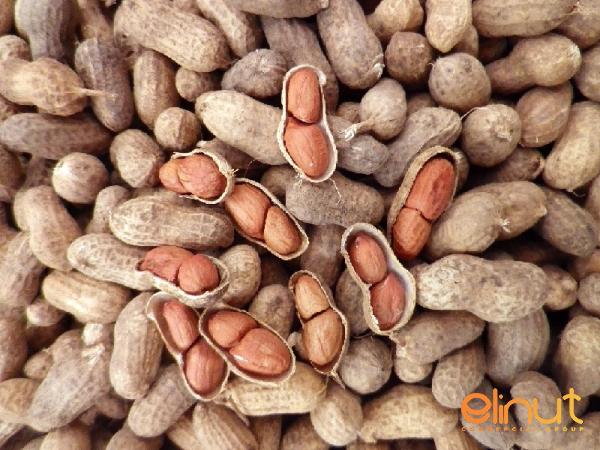 The nuts can then be further processed based on their intended use. One of the primary applications of peanuts is as a snack. Raw peanuts can be roasted and salted, providing a popular and flavorful savory treat. Roasted peanuts can also be used as ingredients in snack mixes, trail mixes, and granola bars. Additionally, peanuts are widely used in the production of peanut butter, a staple in many households. Peanut butter can be made by grinding roasted peanuts until they reach a creamy consistency, sometimes with added sweeteners or salt. It is a versatile product used in sandwiches, smoothies, sauces, and baking recipes. F. Peanut-Based Food Products: Beyond snacking and peanut butter, peanuts are used in a variety of food products. They are a common ingredient in confectionery items like chocolate bars, cookies, and candy, adding a nutty texture and flavor. Peanut oil is another popular product derived from peanuts, widely utilized in cooking and as an ingredient in dressings and sauces. The popularity of peanut-based Asian dishes, such as satay sauces and stir-fries, has also contributed to the demand for peanut products. These dishes often incorporate peanuts as a primary ingredient, bringing a unique flavor and crunchiness to the dishes. G. Peanut Allergy Concerns: Despite the widespread popularity of peanuts, it is important to note that peanut allergies are a significant concern for many individuals. Peanut allergies can range from mild to severe, with some individuals experiencing life-threatening allergic reactions. For this reason, food businesses need to take precautionary measures when producing and labeling products that contain peanuts. Clear labeling and allergen warnings are essential to ensure consumer safety and provide necessary information for those with peanut allergies to make informed choices. H. Health Benefits and Nutritional Value: Both hazelnuts and peanuts offer various health benefits due to their nutrient-rich composition. Hazelnuts are a good source of unsaturated fats, including monounsaturated fatty acids, which are known to have heart-healthy effects. They also contain vitamins E and B, folate, and minerals such as magnesium, phosphorus, and potassium. Peanuts, similarly, are rich in healthy fats, protein, and fiber. They also contain various vitamins and minerals, including vitamin E, biotin, and manganese. Peanuts are a source of antioxidants and phytochemicals, which contribute to their potential health benefits. The consumption of both hazelnuts and peanuts has been associated with a reduced risk of chronic diseases such as heart disease, diabetes, and certain types of cancer. However, it is important to consume nuts in moderation, as they are calorie-dense and can contribute to weight gain if consumed excessively.
The nuts can then be further processed based on their intended use. One of the primary applications of peanuts is as a snack. Raw peanuts can be roasted and salted, providing a popular and flavorful savory treat. Roasted peanuts can also be used as ingredients in snack mixes, trail mixes, and granola bars. Additionally, peanuts are widely used in the production of peanut butter, a staple in many households. Peanut butter can be made by grinding roasted peanuts until they reach a creamy consistency, sometimes with added sweeteners or salt. It is a versatile product used in sandwiches, smoothies, sauces, and baking recipes. F. Peanut-Based Food Products: Beyond snacking and peanut butter, peanuts are used in a variety of food products. They are a common ingredient in confectionery items like chocolate bars, cookies, and candy, adding a nutty texture and flavor. Peanut oil is another popular product derived from peanuts, widely utilized in cooking and as an ingredient in dressings and sauces. The popularity of peanut-based Asian dishes, such as satay sauces and stir-fries, has also contributed to the demand for peanut products. These dishes often incorporate peanuts as a primary ingredient, bringing a unique flavor and crunchiness to the dishes. G. Peanut Allergy Concerns: Despite the widespread popularity of peanuts, it is important to note that peanut allergies are a significant concern for many individuals. Peanut allergies can range from mild to severe, with some individuals experiencing life-threatening allergic reactions. For this reason, food businesses need to take precautionary measures when producing and labeling products that contain peanuts. Clear labeling and allergen warnings are essential to ensure consumer safety and provide necessary information for those with peanut allergies to make informed choices. H. Health Benefits and Nutritional Value: Both hazelnuts and peanuts offer various health benefits due to their nutrient-rich composition. Hazelnuts are a good source of unsaturated fats, including monounsaturated fatty acids, which are known to have heart-healthy effects. They also contain vitamins E and B, folate, and minerals such as magnesium, phosphorus, and potassium. Peanuts, similarly, are rich in healthy fats, protein, and fiber. They also contain various vitamins and minerals, including vitamin E, biotin, and manganese. Peanuts are a source of antioxidants and phytochemicals, which contribute to their potential health benefits. The consumption of both hazelnuts and peanuts has been associated with a reduced risk of chronic diseases such as heart disease, diabetes, and certain types of cancer. However, it is important to consume nuts in moderation, as they are calorie-dense and can contribute to weight gain if consumed excessively.
nuts + buy and sell
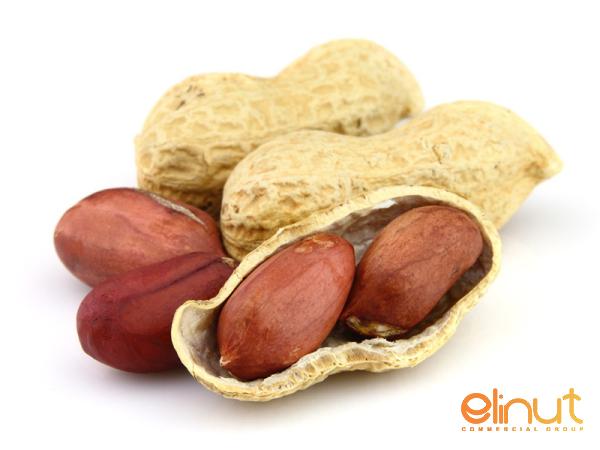 I. Sustainable Practices in the Hazelnut and Peanut Industries: As consumers become more conscientious about the environmental impact of the foods they consume, businesses in the hazelnut and peanut industries also need to consider sustainable practices. Sustainable farming methods, such as optimizing water and fertilizer use, avoiding the use of harmful pesticides, and implementing soil management techniques, can help minimize the environmental footprint. In addition, reducing food waste is crucial for sustainable practices. Nuts with cosmetic imperfections or those that do not meet strict size requirements can still be used in value-added products or as ingredients in other food products. These practices help reduce waste and maximize the utilization of the entire nut crop. J. Challenges and Future Outlook: While hazelnuts and peanuts offer numerous opportunities for businesses, there are challenges to navigate. The hazelnut industry, for example, is affected by climate change, which can impact crop yields and quality. Disease management is also essential, as hazelnuts are susceptible to various fungal and bacterial diseases. For peanuts, challenges include managing aflatoxin contamination, caused by molds that produce harmful toxins. Quality control measures must be in place throughout the supply chain to ensure the safety of peanut products. Despite these challenges, the future outlook for both hazelnuts and peanuts remains promising. Consumer demand for healthy and sustainable food options continues to rise, creating opportunities for businesses to innovate and meet these needs. By understanding market trends, investing in quality control measures, and embracing sustainable practices, companies can position themselves for success in the hazelnut and peanut industries. Conclusion: Hazelnuts and peanuts offer an array of opportunities for businesses in various sectors, from farming and processing to manufacturing and product development. With the increasing demand for healthier and plant-based food options, the market for hazelnut and peanut products is expanding. By understanding the different varieties, cultivation methods, and processing techniques, businesses can capitalize on the market trends and leverage the nutritional benefits and versatile uses of hazelnuts and peanuts. However, it is crucial to navigate challenges such as sustainability practices, quality control, and allergen concerns to ensure the long-term success of businesses in these industries. With careful planning and market-oriented strategies, hazelnuts and peanuts can open doors to numerous business opportunities in the global food market.
I. Sustainable Practices in the Hazelnut and Peanut Industries: As consumers become more conscientious about the environmental impact of the foods they consume, businesses in the hazelnut and peanut industries also need to consider sustainable practices. Sustainable farming methods, such as optimizing water and fertilizer use, avoiding the use of harmful pesticides, and implementing soil management techniques, can help minimize the environmental footprint. In addition, reducing food waste is crucial for sustainable practices. Nuts with cosmetic imperfections or those that do not meet strict size requirements can still be used in value-added products or as ingredients in other food products. These practices help reduce waste and maximize the utilization of the entire nut crop. J. Challenges and Future Outlook: While hazelnuts and peanuts offer numerous opportunities for businesses, there are challenges to navigate. The hazelnut industry, for example, is affected by climate change, which can impact crop yields and quality. Disease management is also essential, as hazelnuts are susceptible to various fungal and bacterial diseases. For peanuts, challenges include managing aflatoxin contamination, caused by molds that produce harmful toxins. Quality control measures must be in place throughout the supply chain to ensure the safety of peanut products. Despite these challenges, the future outlook for both hazelnuts and peanuts remains promising. Consumer demand for healthy and sustainable food options continues to rise, creating opportunities for businesses to innovate and meet these needs. By understanding market trends, investing in quality control measures, and embracing sustainable practices, companies can position themselves for success in the hazelnut and peanut industries. Conclusion: Hazelnuts and peanuts offer an array of opportunities for businesses in various sectors, from farming and processing to manufacturing and product development. With the increasing demand for healthier and plant-based food options, the market for hazelnut and peanut products is expanding. By understanding the different varieties, cultivation methods, and processing techniques, businesses can capitalize on the market trends and leverage the nutritional benefits and versatile uses of hazelnuts and peanuts. However, it is crucial to navigate challenges such as sustainability practices, quality control, and allergen concerns to ensure the long-term success of businesses in these industries. With careful planning and market-oriented strategies, hazelnuts and peanuts can open doors to numerous business opportunities in the global food market.



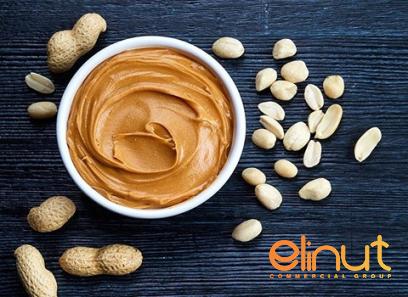

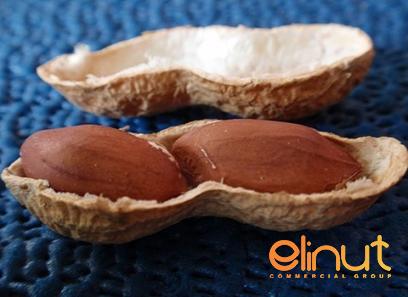
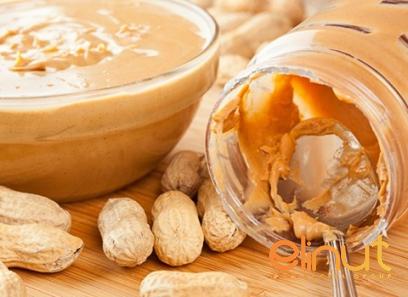
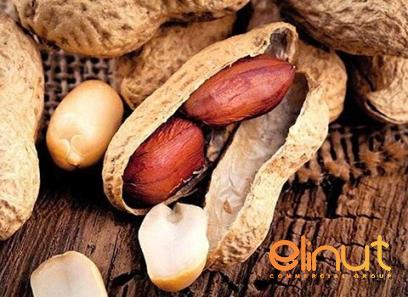
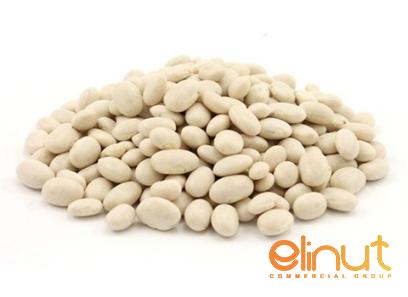

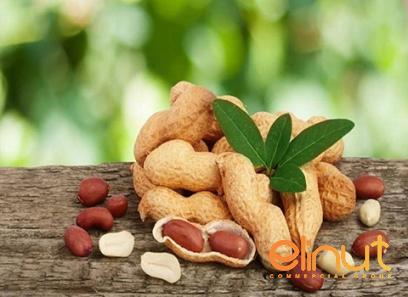
Your comment submitted.